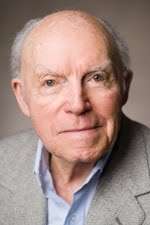Donald Shiley
Donald Pearce Shiley (January 19, 1920 – July 31, 2010) was the inventor of the Bjork–Shiley valve, a prosthetic heart valve. He was a 1951 alumnus of the University of Portland, where he studied engineering.
Donald P. Shiley | |
|---|---|
 | |
| Born | Donald Pearce Shiley January 19, 1920 |
| Died | July 31, 2010 (aged 90) |
| Occupation | biomedical engineering |
Early life
He was born in Yakima, Washington on January 19, 1920.[1] His family was homesteaders, and followed the fruit harvest;[1] he joined his brothers at harvest time through the years of the Great Depression, but quickly learned that his interest and skill were in “fixing things” on the farm.[2] He said that “I liked machines. I liked the way they are ideas that get built.“[2]
Shiley attended Oregon State University, the Land-grant university in Oregon, on a scholarship, but left to join the Navy for service in World War II. After the war, he enrolled at the University of Portland, a private Roman Catholic institution, using the G.I. Bill benefits[1] to study engineering and chemistry. In 1951, he graduated first in his class.[2]
Career
Shiley began working at Edwards Laboratories, located in Orange County, California, south of Los Angeles, the first manufacturer of artificial heart-valves.[2]
Later he established his own company, Shiley Laboratories, in the same area. His first valve was developed together with the American heart-surgeon Kay, and was the first disc heart-valve. Compared with the Edwards valve, which had the shape of a little ball, the disc valve needed much less space within the heart when implanted.
Some years later, Shiley improved his design in cooperation with Swedish heart surgeon Viking Björk, which led to the first tilting disc heart-valve, resulting in a much better flow of blood through the valve.
Shiley Labs developed and manufactured other products, especially tracheal and endotracheal tubes for respiration after surgery in the mouth or throat, and during anesthesia.
The Björk–Shiley heart valve underwent several improvements in the following years, primarily in the degree of opening of the disc, thus reducing turbulence in the bloodstream.
Some years later, Shiley decided to sell his company to Pfizer, and retired.
Personal life
Shiley was married twice: to Pat, the mother of his four children and who died in middle-age;[1] and to Darlene Marcos, who survived him.[1]
Death
Donald Shiley died on July 31, 2010, after deteriorating health. He is survived by his wife, Darlene Marcos, and four children and five grandchildren [3]
Legacy
In March 2007, Shiley and Darlene donated $12 million to the University of Portland, for renovating the University's School of Engineering. The grant was the largest the university had ever received.[4] He also provided a donation to the University of San Diego for the Donald P. Shiley Center for Science and Technology. In 2012, Darlene Shiley donated $1 million to MASTERPIECE Trust, the PBS fund which supports the "Masterpiece" program series, when the Downton Abbey series brought increased interest in Masterpiece and the fund had lost a major donor.[5]
References
- Bell, Diane (April 2, 2012). "Darlene Shiley puts heart and soul into giving". San Diego Union Tribune. Retrieved June 5, 2014.
- Perry, Tony (August 7, 2010). "Donald P. Shiley dies at 90; co-inventor of Bjork-Shiley heart valve". Los Angeles Times. Retrieved June 5, 2014.
- Kucher, Karen; Gustafson, Craig; Robbins, Gary (2 August 2010). "Inventor Donated Millions". The San Diego Union-Tribune. p. B-1. Retrieved 7 October 2016.
- Stone, Jordan (March 22, 2007). "Donald and Darlene Shiley bestow UP with the largest donation in the school's 105-year history". The Beacon. Archived from the original on August 8, 2014. Retrieved June 5, 2014.
- Jensen, Elizabeth (March 29, 2012). "$1 Million Gift to PBS's 'Masterpiece'". The New York Times. Retrieved June 5, 2014.